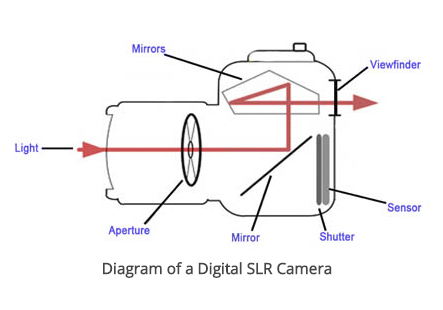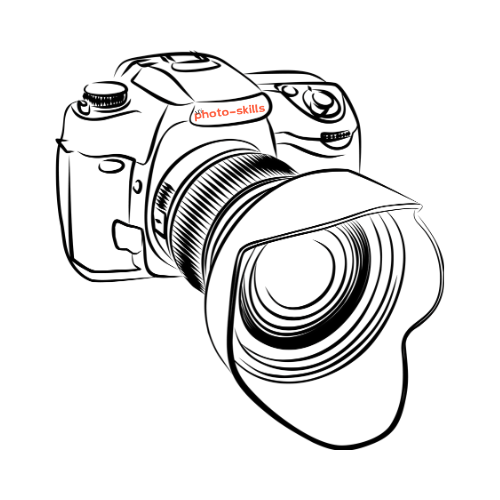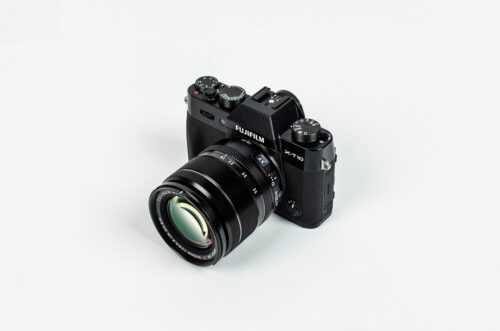Opinions vary greatly in the DSLR vs Mirrorless Cameras debate.
I love discussions like this because I think we can all learn from a variety of opinions expressed by real-life users. And of course opinions from people like me who have only ever used a DSLR but take a great interest in all technology related to the subject.
There are the so called purists – who hang on to the belief that they were right, that certain things are a fad and that these too will come to pass.
Kodak seems to ave taken that stance and look what happened to them.
And through all this turmoil and progress the simple point and shoot cameras have continued to make huge strides in sales – becasue they are so simple and compact yet take fabulous photos.
And then cameras were introduced into mobile phones …
A few years ago people scoffed at phones taking photos but look at the quality of them today.
Now the argument is that phone images don’t print as well as a “proper” camera. That may be so but I have to think the phone/camera manufacturers and the printing industry are hard at work to change this.
It seems to me it has to happen.
But I digress so let’s get back on track
Contents
Leading Mirrorless Brands ... While Canon and Nikon sleep
Nikon and Canon have been competing against each other FOREVER for the lucrative DSLR camera and lens markets.
Meanwhile other players have been hard at work with research and development and now lead the way in the mirrorless digital camera market.
A bit late in the game these two giant’s woke up and are now scrambling – can they catch up?
Sony, Fujifilm, Olympus and Panasonic are way ahead of both Nikon and Canon in the mirrorless field.
Canon and Nikon have produced a number of mirrorless versions but none have caught the attention of the mirrorless camera enthusiasts and professionals.
No doubt the Big 2 are hard at work and will catch up one day. I’d certainly hate to see either one going the way of Kodak
Mirrorless may eventually outsell, and even kill, the DSLR market but the method of recording and processing the images is the same for both mirrorless and DSLR.
No panic there folks your DSLR is still taking wonderful images and should continue to do so for many years to come.
But what of those entering the market now or considering a change?
Let’s see if we can help (confuse) them …
The Difference Between DSLR and Mirrorless Cameras
The main difference between the two is of course the mirror (or lack thereof).
The older technology of the mirror system allows the photographer to see exactly what the sensor will record.
And this can be done by viewing the resultant image directly via the lens.

This is achieved with the use of a mirrors and a pentagram combination.
The mirror is located directly in front of the sensor and reflects the light coming through the aperture up to the pentagram located directly above the mirror in front of the viewfinder.
The mirror lifts out of the way precisely the same time the shutter is pressed.
Light reflected from the image passes through the lens to be recorded on the sensor, the mirror then returns to its original position.
This system is a wonderful piece of engineering but with all these moving parts there is a little thing called “mirror slap” caused by the mirror lifting up.
Mirror slap causes vibration and the potential for out of focus images.
And … then there is further innovation and engineering required to counter this – and the cycle continues.
Mirrorless cameras, on the other hand, don’t suffer from mirror slap!
“Ah … but”
the DSLR die-hards will argue
“by not being able to view the image through the lens you can’t see exactly what the image will look like!”
The solution?
The electronic viewfinder system or EVF for short.
What one engineer can do another can do better!
The EVF system ended that argument (although some haven’t quite got the message yet).
How does EVF work?
I don’t know for certain – I’m not an engineer. I also don’t really know how electricity works. I don’t need to. As long the light comes on when I throw the switch I am quite happy thank-you.
Removing the mirror has one really BIG ADVANTAGE in that all those moving parts can now go back on the shelf!
This means that mirrorless cameras are smaller and lighter
The Advantages of a DSLR Camera
Still great cameras with a lot going for them.
- DSLR cameras are very well-established and have been around for years.
- New lenses and bodies have since had motors built into the body or the lens or both – engineers hey.
- The public (and a lot of photographers) are of the firm belief that DSLR cameras are “professional” or “real” cameras. I smile every time I go out with my camera and people say “Oh you have a real camera – are you a professional?”
- There are thousands of models to choose from each of the hundreds of manufacturers.
- Older lenses can be used (provided they are of the same brand – Nikon on Nikon and Canon on Canon etc. with a huge range to choose from. To continue with this ability to use older lenses on new models (including mirrorless cameras) adapters have become a big part of the marketing strategies.
- Access to accessories that are too numerous to mention.
- Huge second-hand market for both bodies and lenses.
- You can pretend to be a real photographer!
It will take a while for mirrorless cameras to catch up to this sort of established stock and who knows what we will have by the time they do?
The Advantage of Mirrorless Cameras
They’ve come a very long way in a short space of time despite a rocky start.
- You can pretend to be a novice and get away with going places where photographers with “professional cameras” are barred entrance – such as concerts.
- Like the traditional DSLR mirrorless camera lenses are interchangeable.
- They take photos that are as good as their DSLR equivalents. “It’s not the gear – its the photographer!”
- Being compact they can be carried in much smaller bags with or without spare lenses.
- While the technology is relatively new, we all know how fast it moves so the technology has, in my opinion, caught up.
- Great for taking on holiday because of size and weight.
- Smaller tripods can be used (a good quality robust and sturdy tripod should be in every photographer’s arsenal and it is no use when left at home).
- Great for tramping and hiking.
- No mirror slap.
- A wide range of adapters are available to allow the use of other manufacturers lenses. Instead of competing with the big lens manufacturers the mirrorless boys and girls have adapted (pun intended) to take advantage of what is already available.
- Less packaging means cheaper shipping costs – both to you as the consumer and to the retailer. This benefits you , the end user in terms of purchase price.
- As technology improves prices will drop – especially in the second hand market
- And more …
DSLR and Mirrorless Cameras - the Future?
So where are we headed in the future – will the mirrorless prevail or will DSLR cameras continue to dominate?
A great question and I think the jury is still out but not that long until we have a verdict. Clearly the indications are that mirrorless cameras are serious contenders. They aren’t a passing fad and are here to stay.
A very clear indication of the shift to mirrorless is the sheer volume of well-established professionals, guys and gals who have for years made a living out of photography who are heavily invested in good quality lenses, that are selling everything to go mirrorless.
It’s a very big call to make and yet they are jumping ship daily.
I know that if I was in the market for a new camera I would most certainly be looking at mirrorless and the chances are I would go that route.
Which make and model?
That is the thousand dollar questions – show me yours (opinion) and I will show you mine.
There’s space below for just such a discussion.
Until next time …


I’m a newbie photographer, I went mirrorless. I had help choosing my cam though. As an aspiring travel blogger I had a friend who is also a photographer help me choose based on budget, skill and purpose.. (and weight.. i HATE lugging things around)
The choice was a sony alpha 6300. No regrets so far. Learning how to use it still, but happy with my purchase.
Great Camera for travelling. You got good advice.
The learning curve is quite steep (I found) and never ending which is the really exciting stuff.
One function that I never used (until I learned what it could do now I always use it) is the exposure compensation function. Definitely worth trying it out. Experiment with it until you see its true power.
Enjoy your travels!
Hello great blog! Thanks for sharing with me your blog. I like the section entitled The Difference Between DSLR and Mirrorless Cameras- flawless work communicating with your blog readers you communicated the description of the cameras. Thank you.
Raymond –
thanks for the compliments and I am glad you found my pages interesting.
All the best
Lawrence
These are some GREAT tips my friend. The fact that you can have such a small but high quality camera these days is incredible, especially when going into concerts and things like that. I also agree that you can’t always blame the camera or the quality for the end result. At the end of the day it is the photographer and how well developed his or her skills are. My best friend takes incredible photos on his IPhone, and it’s not even the latest one! Thanks for the article, it was a great read.
Hey Brandon – glad you liked it. Yeah phone cameras take some pretty amazing photos (but don’t tell the purists that 😉 )
the debate as to which camera takes better photos rages on and I like the answer “Whichever camera you have on you at the time” – it doesn’t matter if it is a phone, a point and shoot or a DSLR or mirrorless – just be sure to have one with you otherwise the photos will never be taken.
Appreciate your comments my friend.
Lawrence